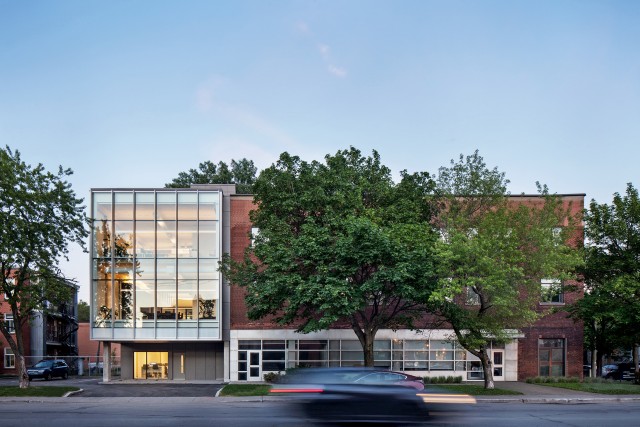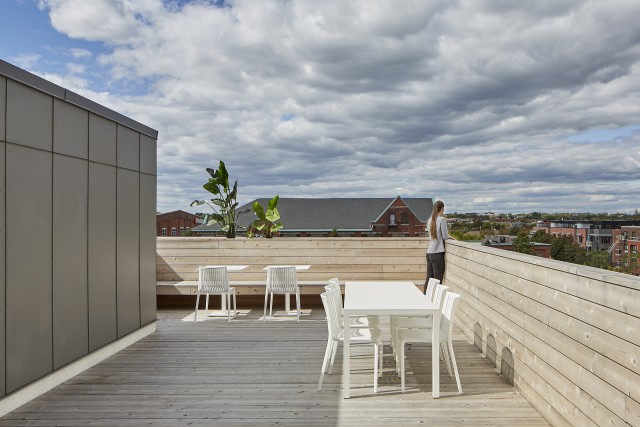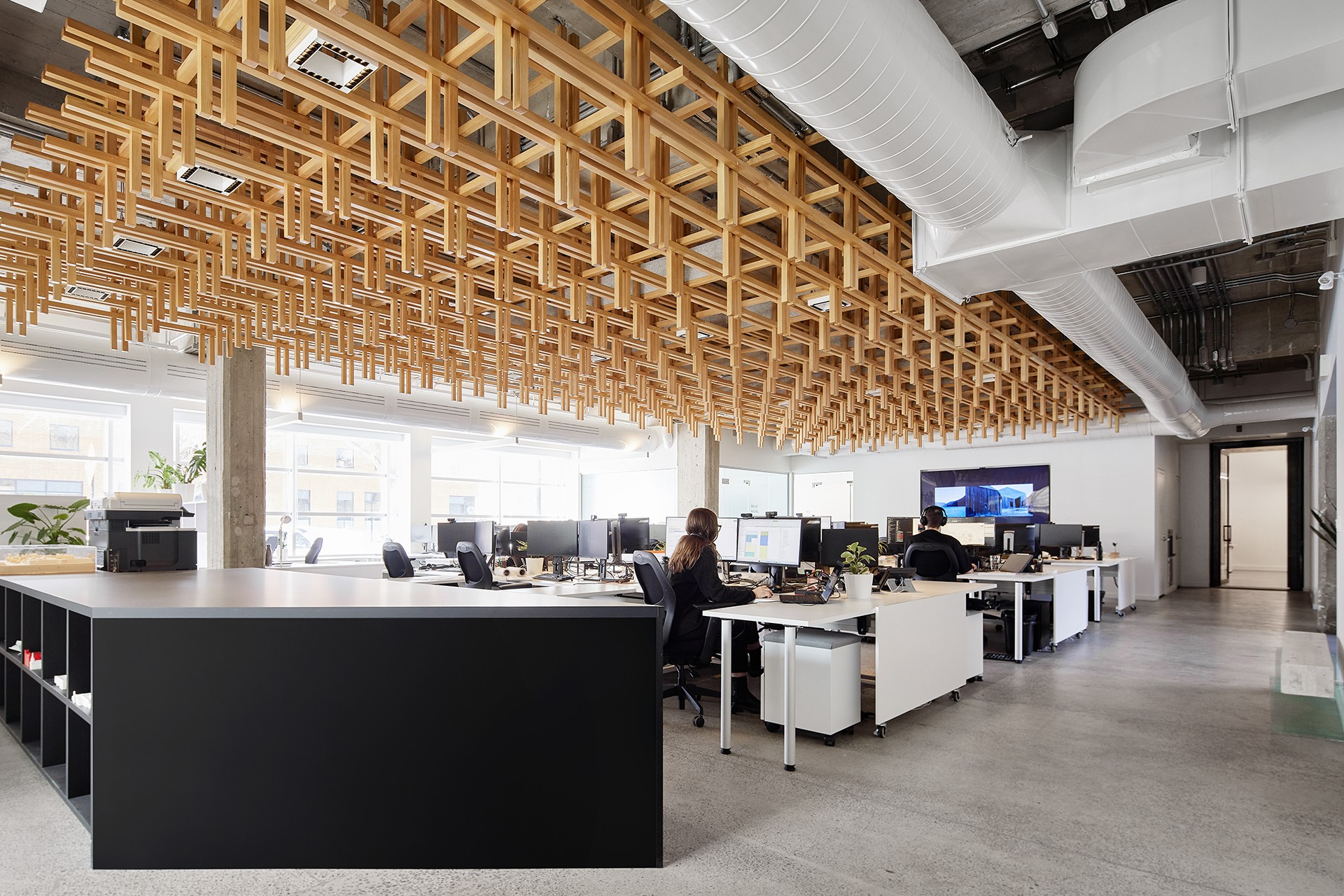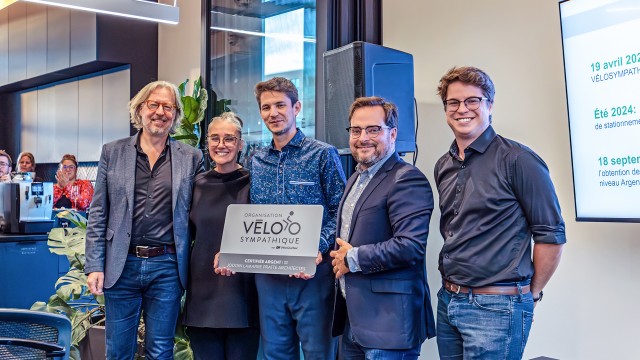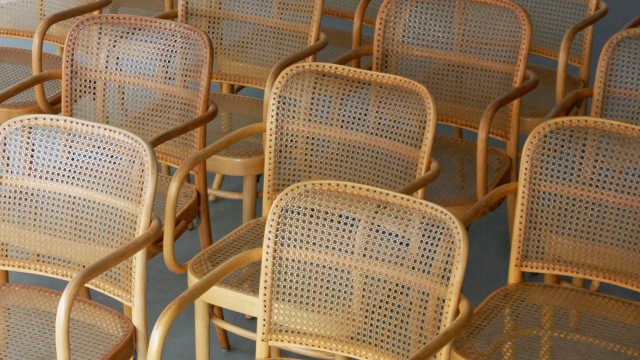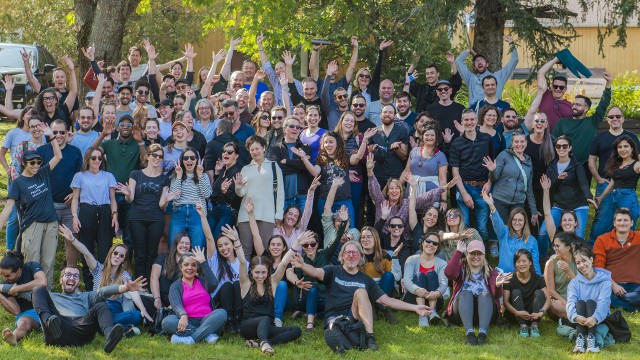The Expansion and Renovation of Our Offices is Complete
Given the rapid growth of our team, which has doubled in only a few years, our firm modernized its offices in three successive phases. We built a 516 m² extension eastward on Rachel Street, renovated the second and third floors interiors of the former industrial building located across from the Angus workshops (acquired in the late 1970s), and redesigned the ground floor.
This project was an opportunity for the firm to demonstrate its expertise, its ability to develop cutting-edge construction techniques, its commitment to reducing greenhouse gas emissions, and its support for the Charte du bois (Wood Charter) of Quebec’s ministère des Forêts, de la Faune et des Parcs (MFFP). It was also an opportunity to rethink space according to the team’s new needs, opening it up to bring in as much natural light as possible and to help colleagues rediscover the pleasure of coming together. It was essential to provide a pleasant work environment, conducive to creativity and wellbeing, as well as to use natural materials, sober colours, and simple furnishings that highlight the exposed structure of the existing building.
Increasing Opportunities for Exchange and Collaboration
For the office renovation, the number of desks was increased without compromising space and the amenities available to employees were greatly enhanced. Many elements were added or redesigned: a spacious dining area with a kitchen and coffee bar; a rooftop terrace; glass-walled meeting rooms equipped for videoconferencing—including a large multifunctional room with a retractable glass partition—a reception area; a materials library; a workshop dedicated to ideation and the creation of models and objects; a barista corner with a kitchenette; indoor bicycle storage; and a shower.
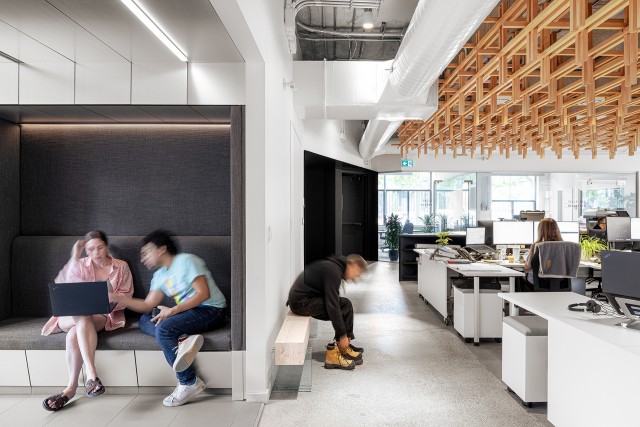
Showcasing Heritage
The design team was keen to honour the built heritage by minimizing its interventions to the existing structure. They developed a clean, understated design that showcases the exposed structure of the old building—a remnant of the neighbourhood’s industrial past.
The ground floor’s large open plan offers several possibilities as a flexible workspace and a gathering place—featuring unassigned desks and a garage door for hosting events. The signature wooden ceiling, with its acoustic properties and integrated lighting, animates the space and creates a warm and relaxing atmosphere for coming together. Its assembly details recall both the firm’s identity by using an orthogonal grid, and the structure of the building expansion by using wood—these characteristics are also reminiscent of furniture designed and manufactured in-house several decades ago.
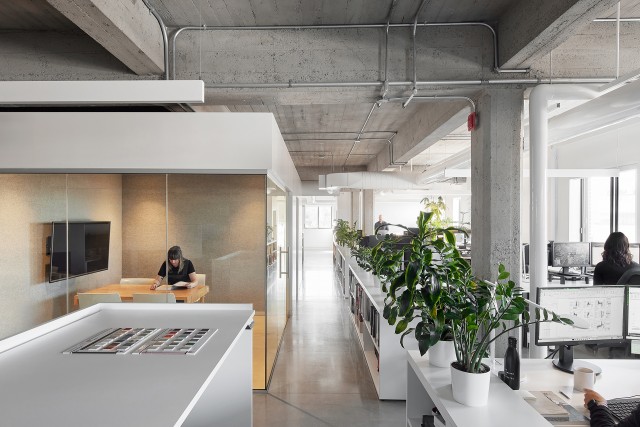
Focusing on Innovation and Sustainability
For the expansion, the design team set itself the challenge of building with wood for a comparable cost to building with concrete. They developed an innovative structural solution combining steel, concrete, and engineered wood, which qualified the project for the MFFP’s Programme de vitrine technologique pour les bâtiments et les solutions innovantes en bois. From Rachel Street, the glass façade exposes the wood structure while offering floor-to-ceiling views to employees. Come evening, the volume becomes a luminous box, like a theatre for the activity taking place inside.
Throughout the project, wood was used for its structural, aesthetic, and acoustic qualities. The grooved (or sawtooth) profile designed for ceilings absorbs more sound than a flat surface while adding a rhythmic architectural composition. The warmth of wood diffuses natural and artificial light and maximizes comfort—both for the expansion and the ground floor ceiling.
The rooftop terrace—a welcoming space used by employees during breaks or for events—was built with red cedar, a wood species chosen for its superior resistance to warping, twisting, and splitting. Not only does it adapt to wide variations in climate, but it also contains an essential oil that blocks mold growth, has acoustic properties that dampen sound transmission, and naturally turns grey over time with no stain or varnish required. Red cedar is renewable and generally comes from regulated operations in Western Canada.
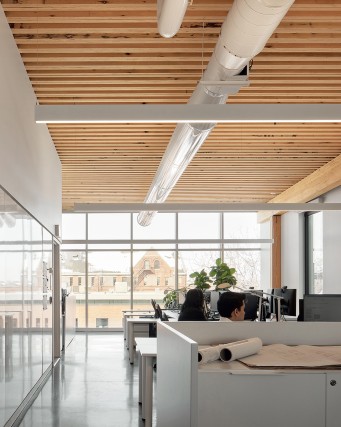
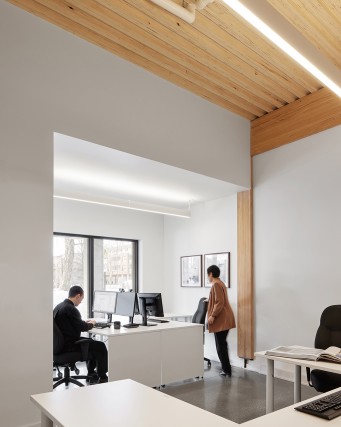
Architecture: Jodoin Lamarre Pratte architectes
Project manager / design lead: Nicolas Ranger, Architect, Senior Partner
Co-designers, phase 1: Michel Broz, Architect, Senior Partner, and Priscillia Champagne, Architect, Director
Designer, phase 2: Hubert Lemieux, architect
Construction documents management, phases 1 and 2: Roxanne Rochette, Architect, Director
Site supervision, phases 1 and 2: Caroline Dubé, Architect
Designer, construction documents management, and site supervision, phase 3: Alex Lamontagne, B.A. Design de l'environnement, Architectural Technologist (with the collaboration of Antonio Camara, Architect, Director, for the design development)
Interior design and furniture consulting: Catherine Fortin, Senior Interior Designer
Electromechanical: Pageau Morel et associés
Structure: SDK et associés
Construction: JCB Construction Canada
Structure Manufacturer (phase 1): Structure Fusion
